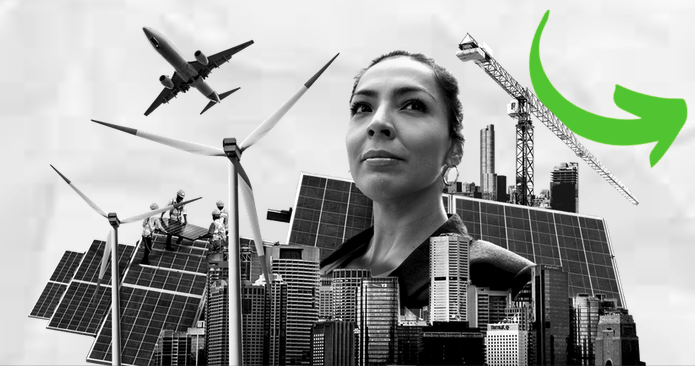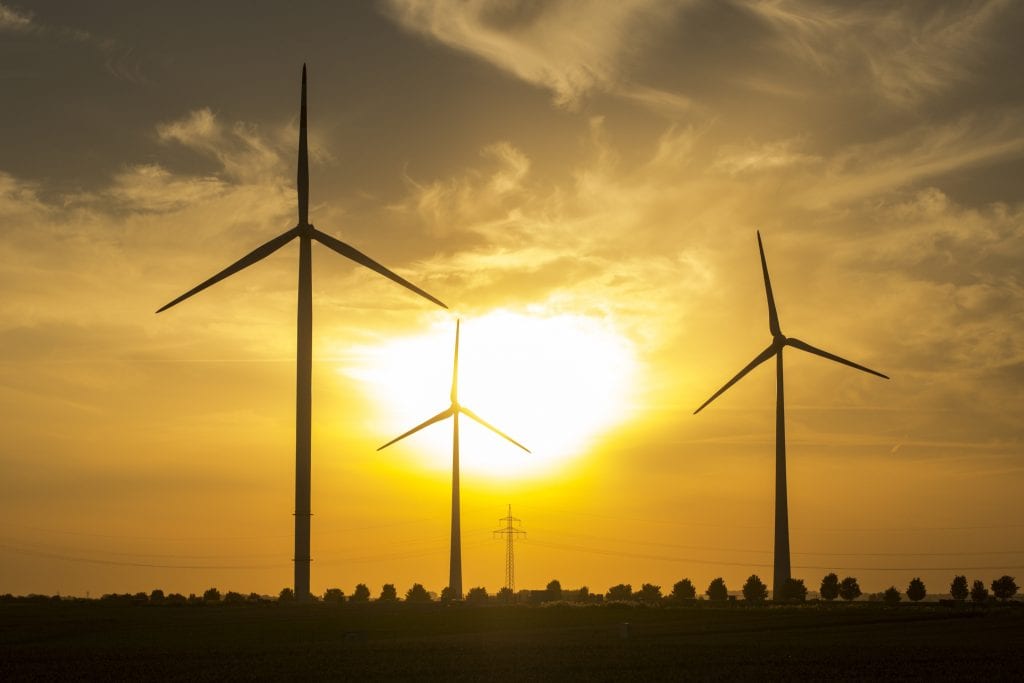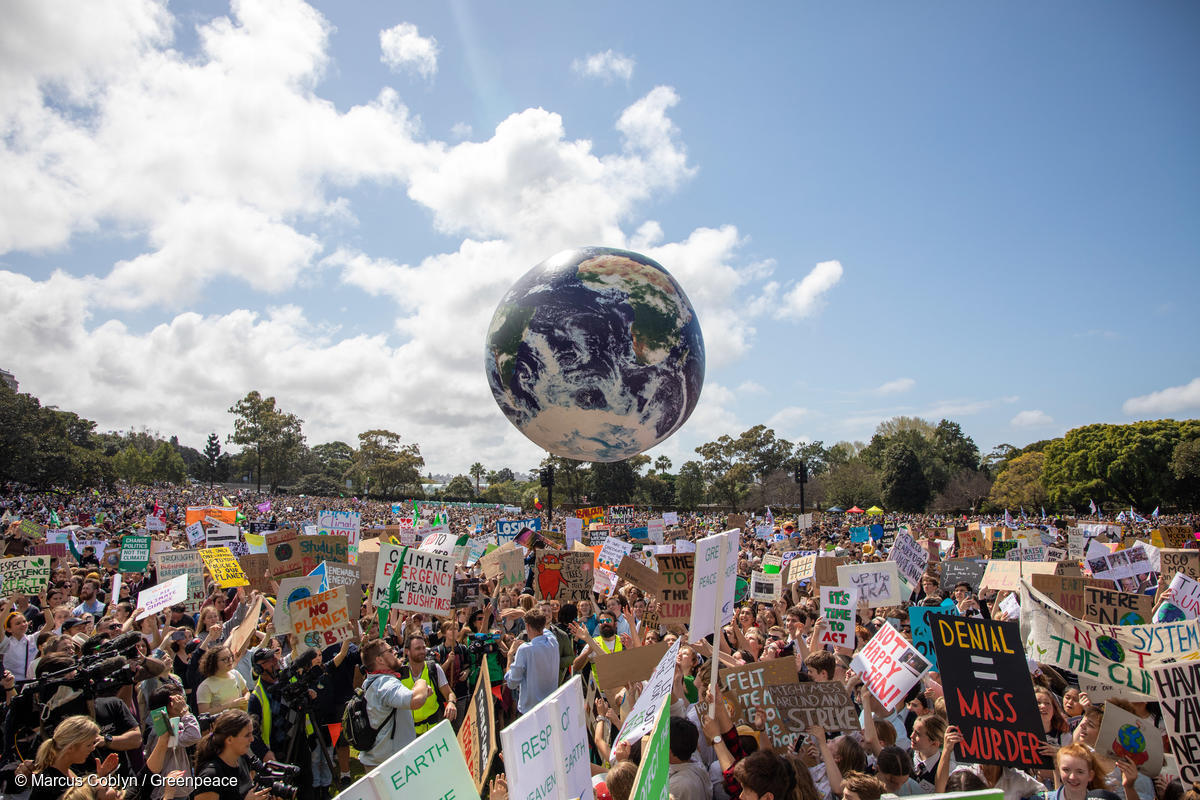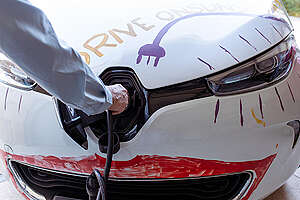By Greenpeace Australia Pacific
It’s time to make Australia a renewable superpower

Millions of people around the world are striking from school or work to demand urgent measures to stop the climate crisis.|
In his victory speech, newly elected Australian Prime Minister Anthony Albanese vowed to “end the climate wars” and make Australia a “renewable energy superpower.”
Greenpeace has laid out our top 13 steps to make Australia a “renewable energy superpower”
1. Replace domestic coal-burning power stations with renewable energy
We need to quickly move to replace coal-burning power stations for domestic electricity with renewable energy, backed by storage. To do this, we need to transform the grid – the physical transmission and distribution networks that will enable new renewable energy to meet all our electricity needs.
2. No new coal, gas and oil projects
The IPCC and IEA are clear that no new oil, gas and oil projects can be developed if the world is to limit global warming to 1.5 degrees C˚. This means new projects like Woodside’s Scarborough and Browse should not proceed.
3. Replace gas-fired power stations with renewable energy
We need transition plans to replace gas-fired power stations for domestic electricity with renewable energy, backed by storage. To do this, as above, we need to transform the grid.
4. Electrify everything else – including vehicles, buildings and industry – and power them with renewables
After electricity, we need to decarbonise other sectors. The first step is to electrify everything that can be, as quickly as possible, and then power it with renewable energy. This includes replacing petrol vehicles with electric; replacing gas stoves and hot water heaters in our homes with efficient electrical alternatives (induction stoves and heat pumps), and electrifying industrial processes with heat pumps.
5. Make renewable hydrogen for the hard to abate sectors – and ensure it’s green!
Green hydrogen is a fuel identified as necessary to decarbonise industries that cannot easily be switched to electricity from renewable energy, including shipping and steel-making. Most hydrogen is currently produced using fossil fuels – this rapidly needs to be replaced with green hydrogen. Australia is well-placed to become a world-leading producer of renewable hydrogen.

6. Export renewable energy and fuel to countries that need it
Power from large-scale renewable energy projects can be directly exported to countries that do not have Australia’s comparative advantage in sun, wind and storage. In addition to renewable power, renewable hydrogen and ammonia can be produced using solar and wind and exported to the world for those hard-to-abate sectors.
7. Export renewables-powered products
Australia has a huge opportunity to use its comparative advantage in low-cost renewables to export higher-end energy-intensive products. This includes products like green steel, green iron and even green food manufacturing.
8. Do renewables right: Share the benefits of clean energy transition
It is essential that renewable export projects on Aboriginal and Torres Strait Islander land obtain Free, Prior and Informed consent and share the benefits of projects with Traditional Owners. Benefits should also be shared with workers and low-income households. Create a Clean Transitions Commission to oversee the orderly, fair transition out of coal and gas and into clean energy for workers and communities. Ensure that low-income households are able to participate in the renewables revolution.
9. Grow clean energy manufacturing
Australia has the potential to export both clean energy and technology like batteries to the world. This can be done through supporting Renewable Energy Zones, Renewable Energy Industrial Precincts and clean technologies that replace gas and coking (metallurgical) coal in manufacturing like green hydrogen.
10. Protect nature while growing renewables
It is essential that new renewable projects are done in a way that protects the environment, including no clearing of High Conservation Value ecosystems. Australia’s beautiful nature is a critical ally in fighting climate change. Strong federal laws to protect carbon-rich ecosystems like forests, bushland, rivers and coastlines are essential – starting with the recommendations of the Samuels Review.
11. Stop financially supporting fossil fuel industries
Align federal policies for industry subsidies, royalty and tax regimes with being a “renewable energy superpower”. The settings currently in place perversely benefit fossil fuels with subsidies and low royalty and tax regimes. This will need to be overhauled to level the playing field and turbo-charge renewables.
12. No false solutions that allow continued increase in fossil fuel production
These include: Carbon Capture and Storage, fossil hydrogen, and carbon offset methodologies that facilitate increasing fossil fuel emissions.

13. Be a global climate leader
This includes contributing our fair share to international climate finance and supporting the most ambitious global agreements on climate. The more countries commit to strong climate action, the more demand there will be for our clean exports.
Looking for more ways to help? You can support our campaign to kick gas to the curb and speed up Australia’s clean transition to renewables


